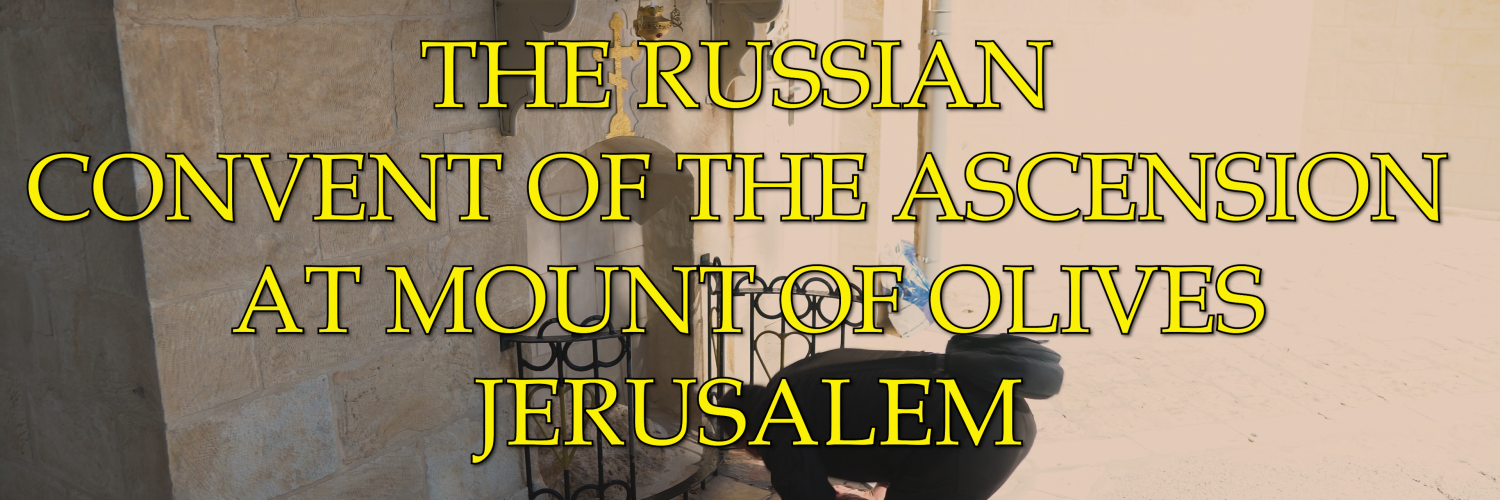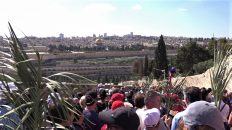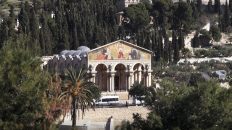The Russian “Convent of the Ascension” is at the highest point on Mount of Olives, and it is about 200 meters from the Chapel of the Ascension – the rock which marks the spot on earth from where Jesus ascended body fully to heaven.
The convent of the Ascension is one of the first Russian compounds in the Holy Land.
The convent was founded in 1870 by Archimandrite Antonine Kapustin. While he was planting trees, he found a mosaic of a byzantine church dated to the 6th and 7th century, burial caves, an upper part of Herod the Great, and other archeological findings. The tomb of Kapustin is inside the main church.
Savior Ascension Cathedral
Kapustin built the main church in the compound in the neo-Byzantine style on the site of a Byzantine basilica which the Persians destroyed in the year 614. The construction of the church started in 1873 and completed in 1881. Kapustin named the church “Little Hagia Sophia” but when the church consecrated on June 8, 1886, it was called “Ascension of the lord.”
When we enter the church, we can see a stone on which, according to tradition, Mary stood during the Ascension of her son – Jesus. A more significant part of the stone is right outside the church.
Inside the church, there are two important icons:
- “The Seeking of the Perished” – produced at Mount Ethos in Greece. Mary’s picture with her Son Jesus is very dark, and tradition says it was even darker when it arrived at the church. The belief is that if you ask for help, Mary replies very quickly.
- “The Quick Hearing” – This Icon is made of Gold and was created by the nuns after they survived a sea journey during stormy weather.
Next to the church, the bell tower is exceptionally high and forms a landmark seen from many parts of the city and, therefore, called the “Russian Candle.”
The Chapel of the finding of the honorable head of John the Baptist
Within the monastery compound, a smaller chapel called “The Chapel of the finding of the honorable head of John the Baptist.”
As we know, Herod Antipas, the son of Herod the Great who ruled in Galilee, ordered the beheading of John the Baptist on the request of his wife Herodias, since he denounced her marriage to Herod, while she is still the wife of Herod Philip (brother of Herod Antipas) who was also still alive.
According to tradition, Herodias was afraid that John would come back from the dead, so she ordered to keep John’s head in a vessel separated from his body buried in Sebaste in Samaria. Nevertheless, one of John’s disciples found the vessel with John’s head inside, escaped it from the palace, and buried John’s head at Mount olives. The Head of John the Baptist was found twice but buried again in the same place. The last finding was by three monks in 452 AC after John appeared in their dreams three times. Another tradition claimed the “Church of Saint John the Baptist,” within the Christian quarter of the old city of Jerusalem, to be the place where the head of John the Baptist is buried. Visitors to the church can see fragments of the sculpt.
The chapel we are visiting today is standing at the same place where the Byzantine built the first chapel during the 4th century. Today we can see parts of Armenian floor mosaics depicting birds, wild animals, and fruits associated with the holy land as remaining from that old chapel. When we enter the chapel, a mosaic-cut indentation in the floor indicates where John the Baptist’s head was found.
Several beautiful gardens are scattered around the compound, but the most beautiful one is at the Eastern side, right on Mount of olives’ slope with a marvelous view of the Judea desert.
That is for today, and until we meet again, let’s all live the Jerusalem Experience!





